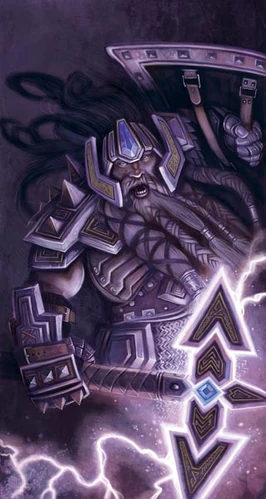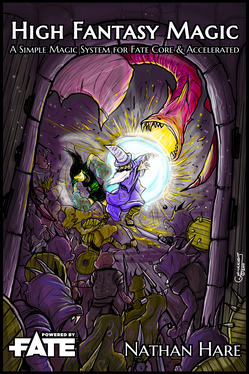My main inspirations for this setting so far are Isaac Asimov's The Gods Themselves and Adrian Tchaikovsky's Children of Time. I wasn't even certain at first whether I wanted the setting to be science fantasy, "traditional" fantasy, sci-fi, or pseudo-contemporary, but those novels (Children of Time in particular, which I just finished recently) did such a wonderful job of creating Weird and interesting non-human species that were nonetheless relatable, that I wanted to do likewise. I've written about plenty of fantasy species, some of which I think have been fairly successful, but it can be difficult to find the balance between making them Weird enough to be interesting, but not so Weird as to be inaccessible. I'm really happy with these and with the direction of this setting, so I hope other people get a kick out of it too.
I will break this into several posts, but this first post will focus on the species themselves. Subsequent posts will go into greater detail about the world, the factions, magic and technology, maybe a small bestiary, etc.
I may or may not write up any game material for this setting, but if I do it will probably be in either TNT, OSR, or FATE. I'm actually going to be running a one-shot in this setting for FATE in a couple weeks. Originally I had thought that I'd prefer this setting in TNT or OSR, that style of game, but actually I'm starting to think a system like FATE might be perfect for this setting. I'll talk about the one-shot itself in another post but one of the player's character is going to be something really cool that interacts with the setting and scenario in a way that I think would be a lot harder to do in one of those settings but could work well with FATE aspects, and I'm very excited for it because it's pretty fucking Wild.
One final note, since I have once again rambled for far too long. When I gave this writeup to my players, they by their own acknowledgement didn't fully "get it" until we actually talked it out, after which they were all really into it. On the one hand, I was really happy with their response when we talked it out, I could tell they were genuinely really into it, but also I'm disappointed that the writing wasn't sufficient to get them excited from the get-go, and that makes me less excited to share this post, if something core to the idea is getting lost between my vocal or conversational presentation of these ideas and the written presentation. So on that note!
One of the novels which inspired this setting and these species
The Goop
The primordial soup itself, as a single, viral-like super-organism distributed across all the oceans of the world. The goop has no coherent motive except to perpetuate its own existence. It is apathetic, but generally peaceful towards other life. Every few geological cycles it enters an omnicidal state of apocalyptic proportions, but that's neither here nor there. It propagates on land in the form of gooplings; fey-like pseudo-organisms composed of a semi-solid mass of goop, water, ice, and oceanic animal muscle fiber, held by composites of carved bone and coral.
Gooplings come in many sizes and shapes; humanoid, centauroid, city-sized turtles hosting colonies of shrimp, crustaceans, and other creatures. The goop communicates through viral-like genetic and epigenetic encoding, waves, and vaporization. Gooplings can produce speech, but it is generally warped and incoherent, as if underwater. Gooplings have little sense of self, nor fear of mortality. Even in their destruction, it is rare that they are not inevitably returned to the goop. A goopling may sacrifice itself to merge into another organism and take over its body; but then it is no longer part of the goop.
Gooplings come in many sizes and shapes; humanoid, centauroid, city-sized turtles hosting colonies of shrimp, crustaceans, and other creatures. The goop communicates through viral-like genetic and epigenetic encoding, waves, and vaporization. Gooplings can produce speech, but it is generally warped and incoherent, as if underwater. Gooplings have little sense of self, nor fear of mortality. Even in their destruction, it is rare that they are not inevitably returned to the goop. A goopling may sacrifice itself to merge into another organism and take over its body; but then it is no longer part of the goop.
Hu
An evolutionary offshoot of humans that adapted to fill the ecological niche of ants. Hu are ant-sized, have an armadillo-like exoskeleton, and other features of burrowing mammals in miniature. While any single hu has little autonomy or intelligence as we think of it, each hu colony has a distinct human-like personality, albeit one that expresses itself through group behaviors and pheromone messaging. Hu have an innately motivated religious reverence towards the humanoid form, which they seek to emulate instinctively.
Hu colonies stitch together the corpses of various animal species into Frankenstein Abominations vaguely resembling humanoids, although the results are often grisly and chimeric. The abominations are mechanically and bio-electrically powered and maintained by an ever-rotating crew of hu, who receive and transmit pheromonal signals emanating from a queen. In this way, abominations are like remote-controlled bio-mecha for a hu colony. So long as an abomination remains within the reach of its colony, it can maintain operation indefinitely. Colonies of a sufficient size will have many abominations, sometimes hundreds or even thousands, where the queen delegates responsibility to special operator-class hu.
Hu colonies stitch together the corpses of various animal species into Frankenstein Abominations vaguely resembling humanoids, although the results are often grisly and chimeric. The abominations are mechanically and bio-electrically powered and maintained by an ever-rotating crew of hu, who receive and transmit pheromonal signals emanating from a queen. In this way, abominations are like remote-controlled bio-mecha for a hu colony. So long as an abomination remains within the reach of its colony, it can maintain operation indefinitely. Colonies of a sufficient size will have many abominations, sometimes hundreds or even thousands, where the queen delegates responsibility to special operator-class hu.
Freakazoids
Eccentric organisms created by an ancient, advanced AI. They were designed with mechanics that have not, would not, and likely could not occur in nature, such as wheels, treads, and engines; all biological. As an example of their biomechanics, freakazoid wheels are usually pseudo-organisms, with their own nerve clusters and circulatory systems, which grow around a freakazoid's appendage, and latch on like a leech for nourishment when not in use. Freakazoids have exceptional speed and mobility, and immense strength. They have insectoid exoskeletons or some other kind of hard exterior, crossed with various animal features and a vehicle, like a cat bus, a raptor bike, a lizard train, or a shark tank.
They reproduce mostly parthenogenically and have almost no sexual dimorphism. To freakazoids, gender has more to do with whether they are car-like, bicycle-like, mechanically-propelled or combustion-propelled, etc., than anything correlating with biological sex. Freakazoids are perfectly capable of functioning in society, and often will do so out of necessity, but they much prefer independence. Each freakazoid has its own internal logic, and they can perform magic-like feats by studying their own freaky science.
They reproduce mostly parthenogenically and have almost no sexual dimorphism. To freakazoids, gender has more to do with whether they are car-like, bicycle-like, mechanically-propelled or combustion-propelled, etc., than anything correlating with biological sex. Freakazoids are perfectly capable of functioning in society, and often will do so out of necessity, but they much prefer independence. Each freakazoid has its own internal logic, and they can perform magic-like feats by studying their own freaky science.
Pterosaurs
Pterosaurs originally come from another realm and filled a similar ecological niche as humans. They are strikingly similar to humans in appearance; even with hair-like pycnofibers. The most obvious differences between a human (or a gray human) and a pterosaur are that they have a wider variety of skin tones and patterns, a longer and more angular skull, a small crest along the back of their heads, and short, slim, vestigial wings, more like the webbing between human fingers.
Pterosaurs are generally slower-paced and quieter than humans, more careful and contemplative, and less prone to religion, superstition, cognitive dissonance, and other cognitive biases. This may be in part because pterosaurs are only sexually active during their mating season, where males will peacock their crests and wings and play-fight with each other. However, pterosaurs are still a romantic people, more so on average than gray humans, even when not in mating season. Pterosaurs also tend to take many romantic partners, and while they acknowledge biological sex during mating, otherwise place little emphasis on the cultural construct of gender when it comes to romance, which they see as distinct from mating per se.
Gray Humans
The closest living descendants of humans. They have cloudy gray eyes, and a layer of gray pigment under their skin, which otherwise varies in color like true humans. Gray humans are a socially- and emotionally-driven species, and their interpersonal interactions are often volatile. While generally accepted as an intelligent species, gray humans tend to engage in superstitious behaviors and are plagued by various other forms of cognitive bias and cognitive dissonance, and are often described by freakazoids as "glitchy".
In an evolutionary sense, gray humans have been on the losing end of a competition with the pterosaurs for longer than the current era. However, one advantage they have is their determination, especially in the face of adversity. Their aforementioned "glitchy" behaviors and emotional volatility make them quick to act and adapt in crisis, and more willing to face seemingly insurmountable tasks to their conclusion, which has benefited them technologically and allowed them to survive in inhospitable regions.



